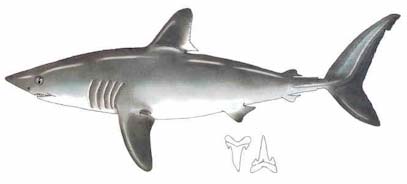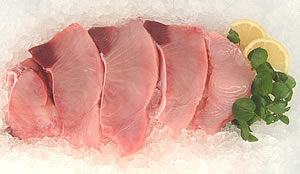APL-31 (2/2)
Here's a short rendition of an old story
I was transferred or to the APL-31 in 1977, at that time she was in Rota Spain. ( APL is Navy for auxiliary personnel living. ) My orders said USS Canopus, a fine submarine repair vessel also in Rota, but somehow I got traded off before even arriving in Spain. I pitched a bitch but an old salty first class petty officer told me to pipe down, that I was really making out. That was the beginning of three and a half years of fun, frolic, boredom, and things I could not repeat.
The crew was mostly rejects from the USS Canopus. Kind of like a big flush of their problem children to the APL. Anyhow this vessel did have somewhat of an important job to do in our national defense. It was not only a barracks barge but also a floating machine shop for submarine repair. Rota was a forward-deployed Fleet Ballistic Missile Submarine Base. I'm talkin' real BIG weapons of mass destruction. It was cheaper and quicker to perform refits in Rota than stateside. Subs would go in a floating dry dock to be worked on. Civilian shipyard workers were flown into Spain and used the APL as a work barge, this would last anywhere from 45 days to two months. This concept greatly shortened refit periods getting the subs back on patrol even sooner. Submarine crews had messing and berthing facilities onboard, and there were about 25 of us who were ship's company personnel.
The APL was tied up to the dry dock to facilitate repair. The problem was this type of repair period only happened about once every three months, so there was some free time on our hands, and young sailors will be sailors. At least 10 of these guys were scoundrels, drunks, debauchers, and everything that every mother warned their daughters to stay away from - but really didn't. Now don't get me wrong here these guys would really put out the work, they could do 12 hours of work in 8, and could easily do a 48-hour shift when needed. But when the refit was over the partying was on. Since this was not a commissioned vessel we figured we could keep beer on board, we built our own berthing and lounge area ( lower level midships port side ) and female visitors were not that uncommon. Back then the Navy's TV commercial slogan was "it's not just a job, but an adventure" boy did we make an adventure out of it. Sometimes during a particularly heavy work period, somebody would yell, "Ain't just a job" and we would make the reply loudly "it's an adventure" always with that knowing smirk on our face. I think the slogan now is "accelerate your life" bet the connotations to that have been changed around.
The APL was transferred to King's Bay GA in 1979 and only about four of the original crew stayed with her. Needless to say, things changed once we got back stateside. Good people were transferred onboard and things got serious in setting up in a new sub-base. President Reagan was elected and he got the Navy going even better than it was. But believe me, any funny movie you see about the Navy pales in comparison to what happened on board "Happy Acres." Nothing bad, mind you, just something nice to think about as I get older. I'm glad she wasn't scrapped, but just laying there flapping in the current. So when you hear that noise when you dive near her and you listen real hard you might pick up the sounds of rowdy young sailors clanking beer bottles, the giggling of young ladies, and some of the most raucous singing that would make Madonna blush.
Steve Furnace
Hull Maintenance Technician 2nd Class - APL-31
Retired CHIEF PETTY OFFICER U.S. Navy
P.S.
That "Jack's Spot" name, that's something you side-walkin' beach creatures pinned on her. To hundreds of sailors, she'll always be called "Happy Acres".
I BELIEVE THE APL 31 WAS STATIONED FOR A TIME AT THE NAVAL ACADEMY IN ANNAPOLIS, HOUSING COOKS AND SUPPORT PERSONNEL MY FATHER WAS STATIONED THERE IN '52-'54 AS A BOATSWAINS MATE ABOARD HER. SHE WAS DOCKED ALONGSIDE THE OLD SPANISH CRUISER "REINA MERCEDES" I'VE BEEN ABOARD BOTH VESSELS AS A YOUNG LAD ACCOMPANYING MY DAD TO WORK. I DON'T KNOW WHEN THE BARGE LEFT ANNAPOLIS, BUT I WOULD GUESS ABOUT THE SAME TIME THE "REINA MERCEDES" WAS SCRAPPED. I OFTEN WONDERED ABOUT THE OLD 31, NOW I KNOW SHE'S IN GOOD HANDS.
THANKS
WILLIAM T. BAUGH JR.
Navy Barge Now Part of Reef in New Jersey
Robert Hanley
THE BALTIMORE SUN
August 31, 2001
ABOARD THE SEA INN, off New Jersey - The old Navy dormitory barge, a squat, three-story maritime rowhouse known by the inelegant name APL-31, rolled gently at anchor in the Atlantic about 16 miles off Manasquan recently. Five minutes later, the dull thud of explosives rocked the 261-foot ship, and puffs of gray and brown smoke rose from its bow and stern.
It started sinking bow first. By 12:20 p.m. it had vanished into about 125 feet of water for a new life as an artificial reef. For most of its 57 years, the barge had served as a floating home for Navy repairmen and mechanics who worked on disabled ships.
APL-31 is now in the artificial reef known as Shark River, one of 14 New Jersey has created along its Atlantic Coast since 1984 as habitats for fish and playgrounds for recreational divers and fishermen.
Besides 95 old ships and barges, elements in the artificial reefs include hundreds of concrete-laden tires chained together, steel girders, huge chunks of concrete abutments from demolished bridges, tons of rocks dredged from New York Harbor, about 400 surplus Army vehicles, including tanks and armored personnel carriers, and igloo-shaped concrete structures that are called fish condos and made by inmates in state prison.
State officials say the artificial reefs make ideal spawning grounds for fish along the Atlantic's generally flat, sandy bottom off New Jersey. First, the reefs attract mussels and barnacles, then smaller fish, and later, to the delight of skippers of chartered fishing boats and party boats, sea bass, porgies, tautog, ling, and some fluke, cod, and pollock. Besides adventure, the sunken ships provide divers with plenty of lobsters, officials say.
Last year, anglers caught an estimated 4.8 million fish on the 14 artificial reefs, or about 18 percent of all fish caught in New Jersey's saltwater, according to a survey by the state Division of Fish and Wildlife, which oversees the program. Division officials say they consider the catch remarkable because the artificial reefs occupy only about three-tenths of 1 percent of New Jersey's seafloor.
"Everybody's very happy," said Bill Figley, the division's reef coordinator.
Commercial fishermen sometimes grumble about the artificial reefs because their nets get snagged and damaged by them.
"We try to work with the commercial fishermen, so we can provide fishing for everyone," said John Makai, a supervising biologist with the state Bureau of Marine Fisheries. "But the artificial reefs are taking up only a very minuscule amount of the sea bottom."
The Shark River site is especially popular with divers because it is the deepest of the 14 sites and contains some of the most interesting ships. The APL-31, at 261 feet, is the site's second-biggest ship. The biggest, the USS Algol, a 440-foot troop transport, was sunk at the site nearly a decade ago. A few hundred yards away rests the remains of the Stolt Dagali, a Norwegian tanker sliced in two by an Israeli luxury liner, the S.S. Shalom, in November 1964.
"Dive boat captains call Shark River the parking lot because there's always boats out here for either diving or fishing,''' said John Mahoney, the 50-year-old skipper of the Sea Inn, a 73-foot boat used by divers. "Divers like it for a lot of reasons. Some want to explore. Some want artifacts. Some want the lobsters. And some just come to take pictures."
In recent years, artificial reefs have become more common along the Eastern Seaboard from New York to Florida. Currently, a committee representing all those coastal states is working with the Navy on plans to obtain 300 to 400 mothballed Navy vessels, including warships, said Figley, New Jersey's program coordinator. "Even if we could get 10 percent of them it would be a big deal," he said. "They're huge, up to 1,000 feet long."
The artificial reef program costs New Jersey taxpayers little if anything, officials say. Almost all of the money for it comes from fund-raisers and donations by diving and fishing clubs and by private citizens. Each year, the United States provides New Jersey with about $500,000 for the program from federal excise taxes on fishing gear and fuel for recreational boats, said Al Ivany, a spokesman for the Fish and Wildlife Division.
Adding the APL-31 to the Shark River "reef" cost about $25,000, primarily for cleaning the vessel and towing it to the site from a Philadelphia shipyard, Ivany said. He said the Navy provided the ship free.
All vessels and other objects sunk on the "reefs" satisfy the Coast Guard's environmental safety standards, Makai said.



Questions or Inquiries?
Just want to say Hello? Sign the .